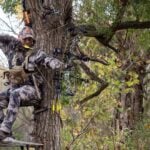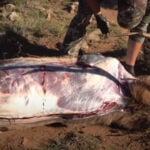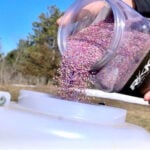Do you have your cameras hung in the most productive spots?
Most bowhunters own and use trail cameras. Perhaps you have multiple yourself. The question is, are you reaping their maximum benefits? After all, there are a bazillion places to hang trail cameras. The key is to hang them in locations that most of the deer on your property frequent weekly and even daily.
If you feel like you’re not quite making the best use of your trail cameras and getting the results you want, perhaps it’s time to revisit the drawing board. If you aren’t already doing so, consider hanging them in the locations I note below. Here’s a look at the 6 best spots to hang a trail camera this season.
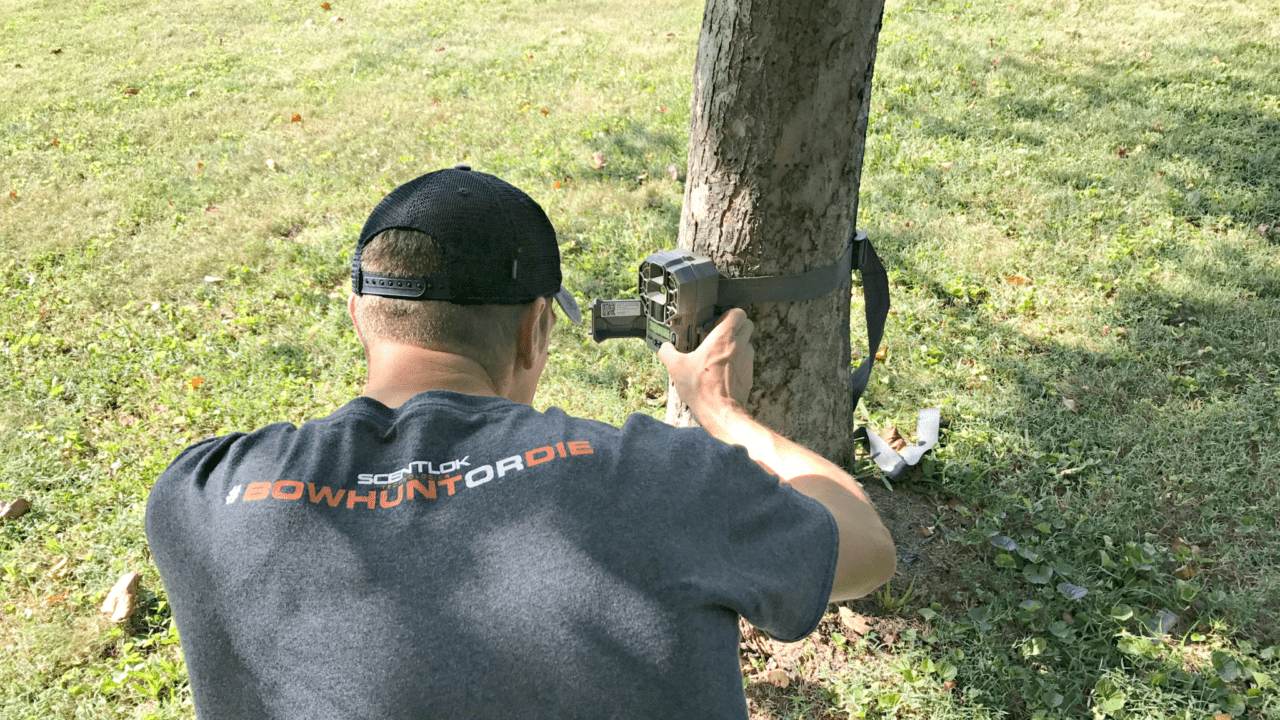
Where will you hang your trail cams this season?
Mineral/Feeding Sites
Throughout the summer months, bucks are in the antler-development stage and seeking the vital vitamins, minerals and nutrients needed to grow their headgear. These are excellent locations at which to take inventory of deer on your property. When shopping for minerals, always read labels. Many “minerals” are actually mostly salt, which is desirable to deer, but not nearly as beneficial as legitimate minerals.
Expect buck visits to taper off at mineral sites as fall progresses. Sure, they’ll still visit them, but with their antlers fully developed, they’ll get almost everything they need from your food plots or whatever other forage is available. In other words, these aren’t necessarily great hunting locations, but more so great places at which to photograph deer.
Of course, you must abide by state regulations that governing baiting and feeding of wildlife. If your state allows, feeding sites can be productive locations to continue photographing deer all throughout the hunting season. Obviously, most mature-buck activity will transpire nocturnally around these sites, but at least you can determine likely locations at which to intercept bucks since you’ll be able to peg the areas they’re frequenting most.
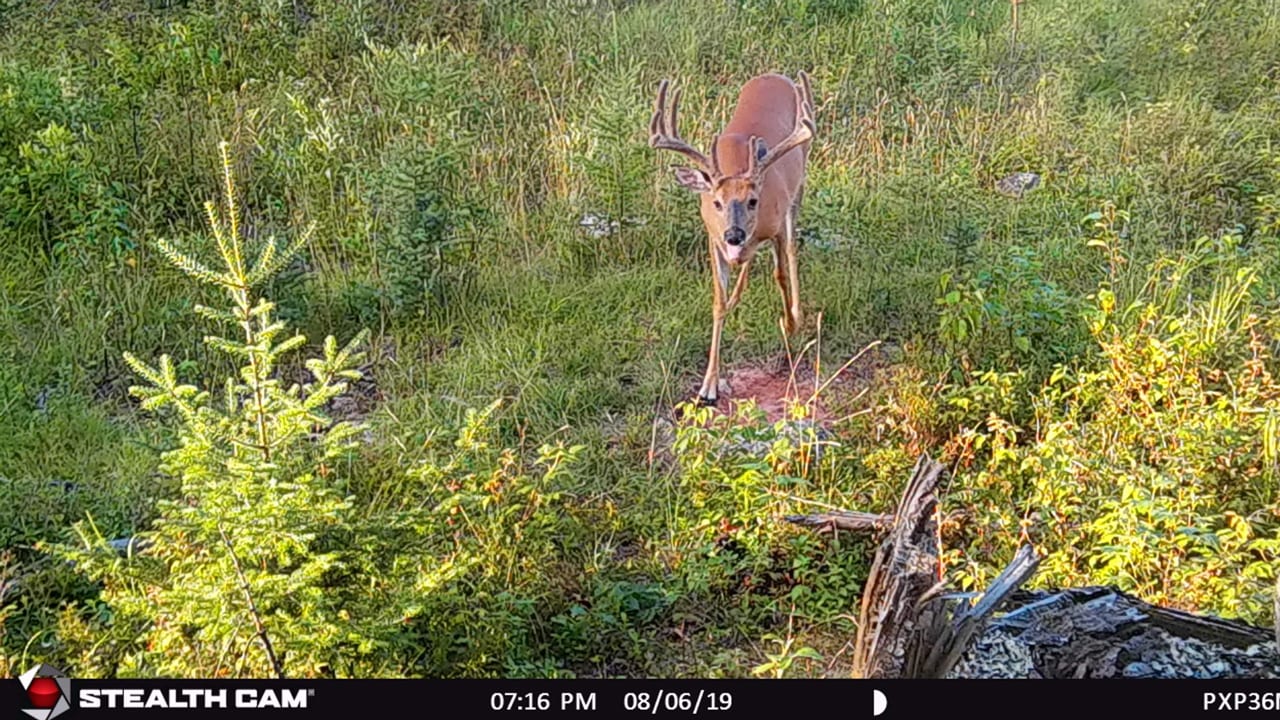
Mineral licks are a classic spot for catching bucks on camera.
Fence Crossings or Open Gates
Deer that live on one side of a fence but need necessities across it will negotiate the wires at the easiest location to do so. Look for a missing top or bottom strand. Also, look for locations where a tree or large limb fell on the fence and brought it down. If you have permission to do so or are on your own land, consider manipulating the fence by tying strands together, therefore lowering the jump height. Regardless if the jump was created intentionally or unintentionally, fence crossings can be great places to hunt and photograph deer.
Another solid option that can help deer get through a fence is an open gate. If you don’t have stock within the enclosure, leave the gate open, especially if it leads to a lush food source or another deer necessity. Then, drive a post into the ground for your trail camera, unless a nearby tree or fencepost will work.
Scrapes or Mock Scrapes
I’ve found buck scrapes as early as late August, but most begin popping up in mid-October. They’re generally prevalent along travel routes that lead out of bedding areas, although you’ll also find them along food-source edges. If you want to draw deer to a certain location, consider creating a mock scrape.
Over the years, I’ve hung many trail cameras over scrapes and mock scrapes, and I continually find the number of deer that frequent them astounding. On one South Dakota scrape, in particular, I photographed eight different public-land bucks within just a few days, a few of them being shooters. If you want to monitor bucks during the pre-rut, I know of no better way than to deploy cameras over all primary scrapes on your hunting grounds.
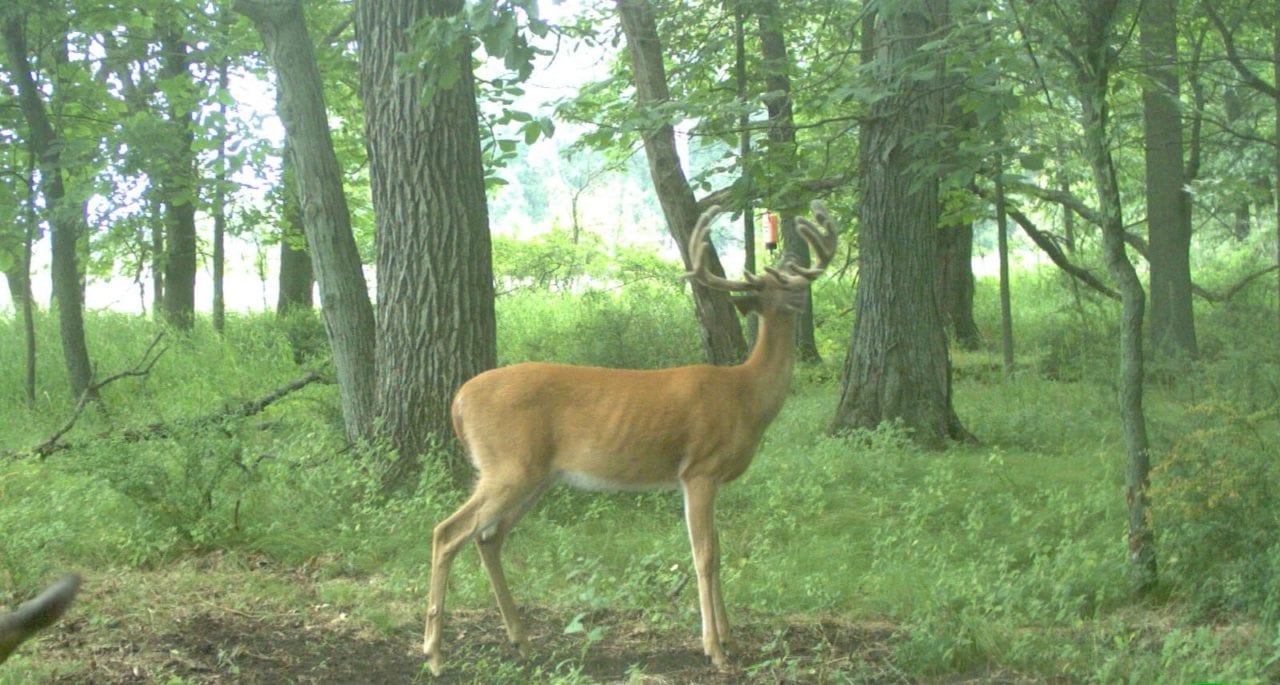
Scrapes are a no-brainer. Get a camera hung here for sure!
Kill Plots
Narrow kill plots situated en route to larger food sources can be productive trail camera locations. Bucks tend to stage in these more secluded foody hideouts until darkness canvasses the landscape. Generally, these are better locations at which to photograph and hunt bucks because their shape and design constricts deer through a narrow swath. Bucks are liable to feed anywhere in a large food source once darkness falls, so hanging a camera on the edge of a large field can produce spotty results. Instead, consider hanging a trail camera or two over a narrow kill plot where you’ll capture the lion’s share of the deer movement.
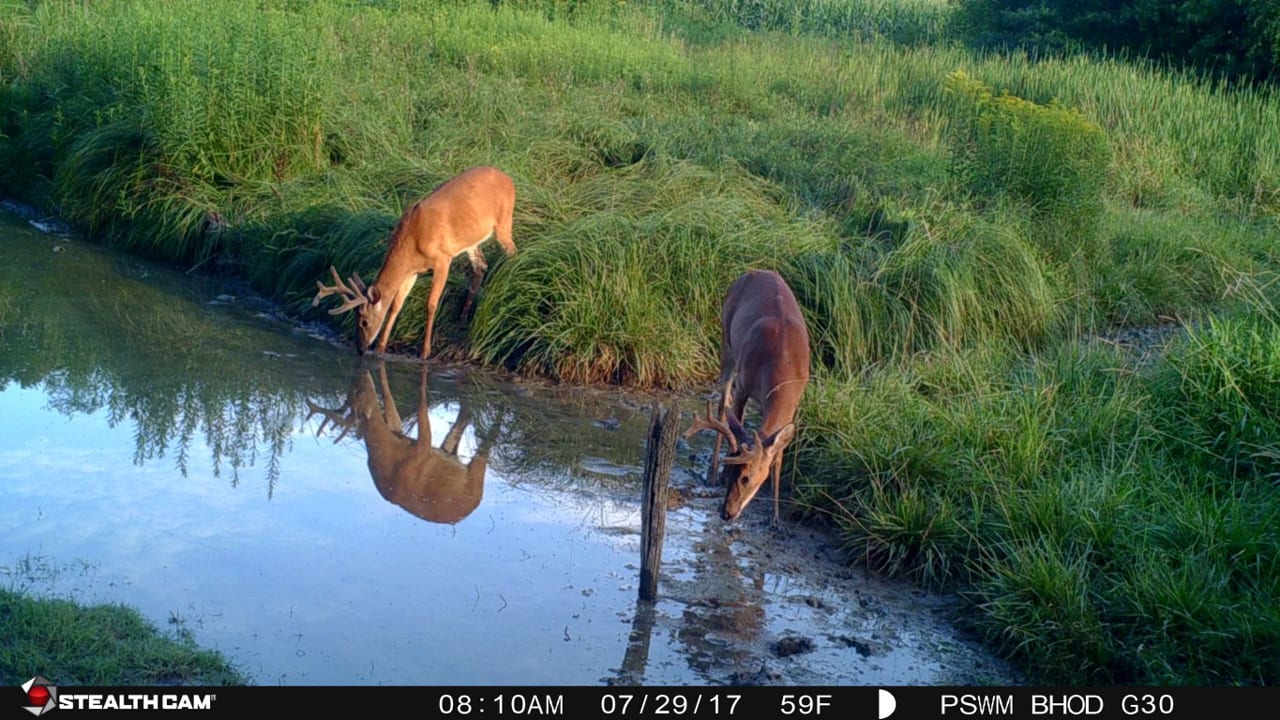
Water holes and food plots are two spots you definitely want to hang a camera.
Water Sources
Deer must stay hydrated, and when conditions are dry, they often don’t get sufficient hydration from dew-coated grasses and other forage. This means that a small pond or pool can be a dynamite location at which to photograph and even hunt deer. This is true during early season when temperatures are typically warmer, but it also goes for the rut when temperatures are unseasonably warm.
Smaller water sources — think man-made — are usually easy to monitor with a trail camera due to their sizes. If your property has a larger-scaled water source, study the edges for tracks. Typically, there will be a main trail leading to one edge or another where most deer feel safe to drink. Find a tree within 5 yards or so and hang your camera.
Funnel Trails
Deer trails are obvious trail camera locations. However, all trails aren’t created equal. My favorite trails to monitor with trail cameras are those that lead through a narrow terrain funnel. I also expect the trail to be blatantly obvious and daily traveled by deer. This way I know that I’ll be photographing many of the deer that use the area within one week’s time.
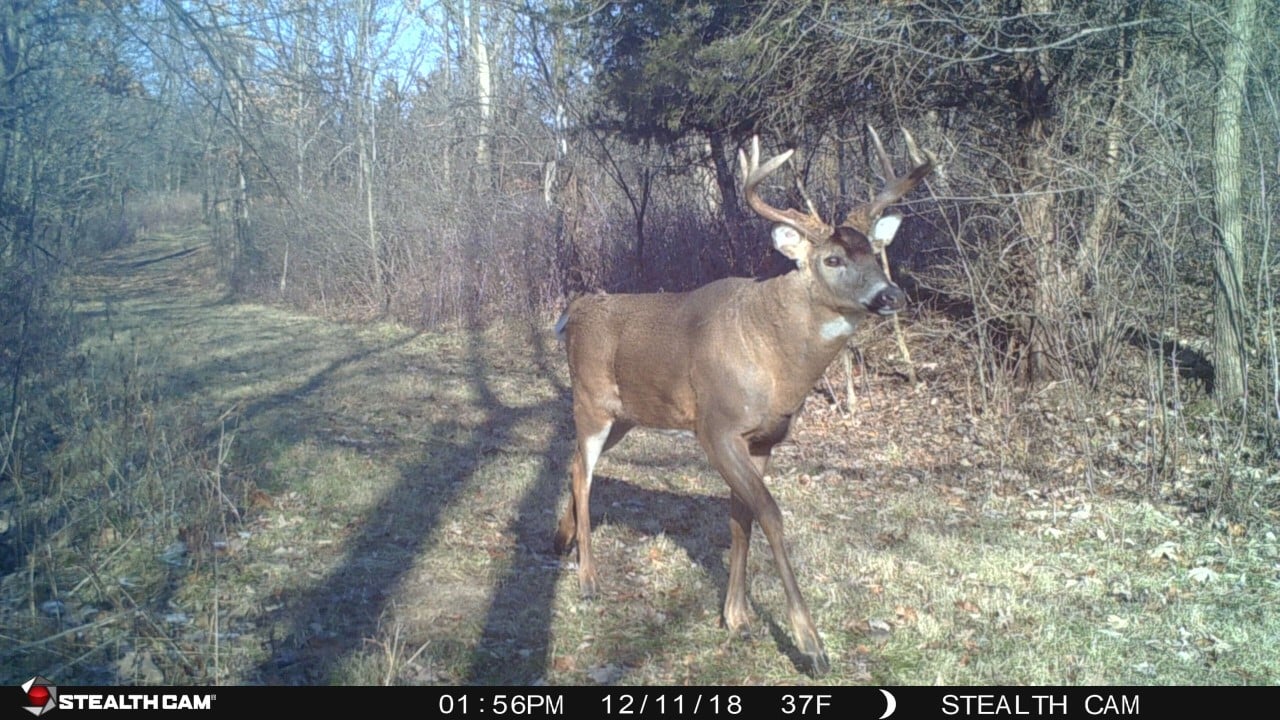
Trails that funnel deer are a great spot to take inventory of the bucks on your property.
Best Spots to Hang a Trail Camera – Conclusion
Trail cameras can be used in numerous ways, and every hunter’s goals with using them tend to vary. Personally, I like to use them to know what bucks are in the area, and then to craft a hunting strategy around tendencies that the cameras indicate.
As a word of caution, I believe the more often you visit the trail camera — I know, checking pictures is addicting — the greater the risk of driving deer to nocturnal status. If you’re using conventional trail cameras that require woods visits, check them only seldomly at select times and when the wind direction is right.
Take the tips in this article for what they’re worth and step up your trail camera program this season.

 By
By 